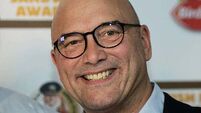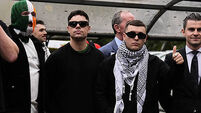An offer we can’t refuse
WHEN The Godfather opened in 1972, 40 years ago, it made cinema audiences around the world an offer they couldn’t refuse as a crime film quite unlike anything that came before it.
Up to then, movie gangsters tended to be one dimensional creations — snarling villains like James Cagney or Humphrey Bogart taking on the cops with a blasting machine gun in classics like White Heat or The Public Enemy. In these stories, the line between good and bad was easily identifiable.
After the premiere of The Godfather in New York in 1972, audiences found themselves presented with an entirely new kind of criminal — one to whom family, loyalty and honour were all important. In the hands of director Francis Ford Coppola, the gangster genre was transformed into an immigrant family’s pursuit of the fabled American dream.
For the first time, we saw the inner workings of the Mafia, a world where the Godfather was the ultimate source of power and only one commandant was sacred: “Never side against the family.”
For Marlon Brando, the film represented the pinnacle of a career as one of cinema’s greatest actors, while for upcoming talents like Al Pacino, James Caan and Diane Keaton, it became the perfect launch pad for screen glories to follow.
It was a film peppered with iconic lines — many of which immediately entered the cultural mainstream. “I don’t like violence,” one mobster observes. “I’m a businessman; blood is a big expense.”
The Don himself has many of the best comments, including: “I spent my whole life trying not to be careless. Women and children can afford to be careless, but not men,” he remarks in old age. The threat of violence is always present, even in the most innocent statements: “Don Corleone never asks a second favour once he’s refused the first.”
Even romance in The Godfather was linked to death: “In Sicily, women are more dangerous than shotguns,” goes the local dating advice. And even a marriage proposal comes with a warning: “There are many people who would pay to know where I am. But then your daughter would lose a father instead of gaining a husband.”
In the end, nothing was more important than the family business — a game where contracts were completed only with a handshake. “We are all reasonable men here,” says one mobster. “We don’t have to give assurances as if we were lawyers.”
Much of the public’s fascination with The Godfather centred around the connection between fictional characters and their possible real-life counterparts. Don Corleone’s godson Johnny Fontaine was said to be based on Frank Sinatra — an icon who was continually rumoured to have mafia connections. Fontaine’s desire to get the lead role in a big Hollywood film closely mirrored Sinatra’s own moves to get the part of Maggio in From Here To Eternity. Rather than making ‘an offer he couldn’t refuse’ as happened with the infamous horse’s head in the bed scene, however, most believe it was Sinatra’s wife at the time, Ava Gardner, who finally helped land him the role that revived his career and won him an Oscar.
However, Sinatra was apparently furious at the public’s perception that Fontaine was him, and screamed abuse at Mario Puzo in a Manhattan restaurant shortly after the film’s opening. The horse-loving director in the film, Jack Woltz, was widely thought to be based on Jack Warner of Warner Brothers, who had his own racing stable. During rehearsals for The Godfather, a false horse’s head was used for the bedroom scene. For the actual shot, a real horse’s head was used without the actor John Marley’s knowledge to give the scene more realism — a task it achieved, in spades.
Most of the mob bosses in the film were based on real people of the era, including Moe Greene as Bugsy Siegel, the man credited with the original vision that made Las Vegas the gambling mecca of America.
Brando, who famously opted not to attend the Academy Awards, calling the ceremony “a meat parade”, sent a Native American Indian, Sacheen Littlefeather, to collect his best actor Oscar. In her speech, she quoted Brando’s disappointment at Hollywood’s “treatment of American Indians by the film industry and on television”.
Clint Eastwood, one of the subsequent award presenters, wondered if he should present the award for best picture “on behalf of all of cowboys shot in John Ford westerns over the years”.
Regardless of his politics, Brando was the centre that The Godfather revolved around — not just for his remarkable job of acting, but also the mannerisms he brought to the role. He wanted to make Don Corleone “look like a bulldog”, and stuffed his cheeks with cotton wool for the audition to deliver the famous wheezy, whispering voice. For the actual filming, he wore a special mouthpiece made by a dentist — an appliance currently on display in the American Museum of the Moving Image in New York.










